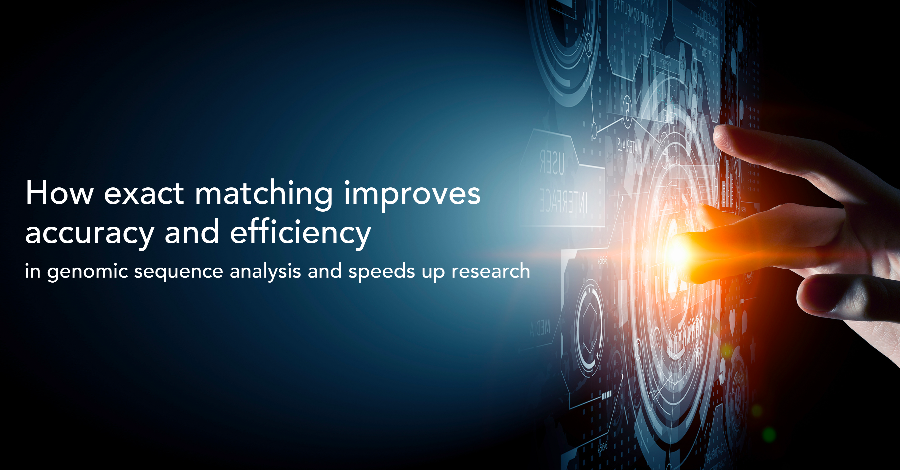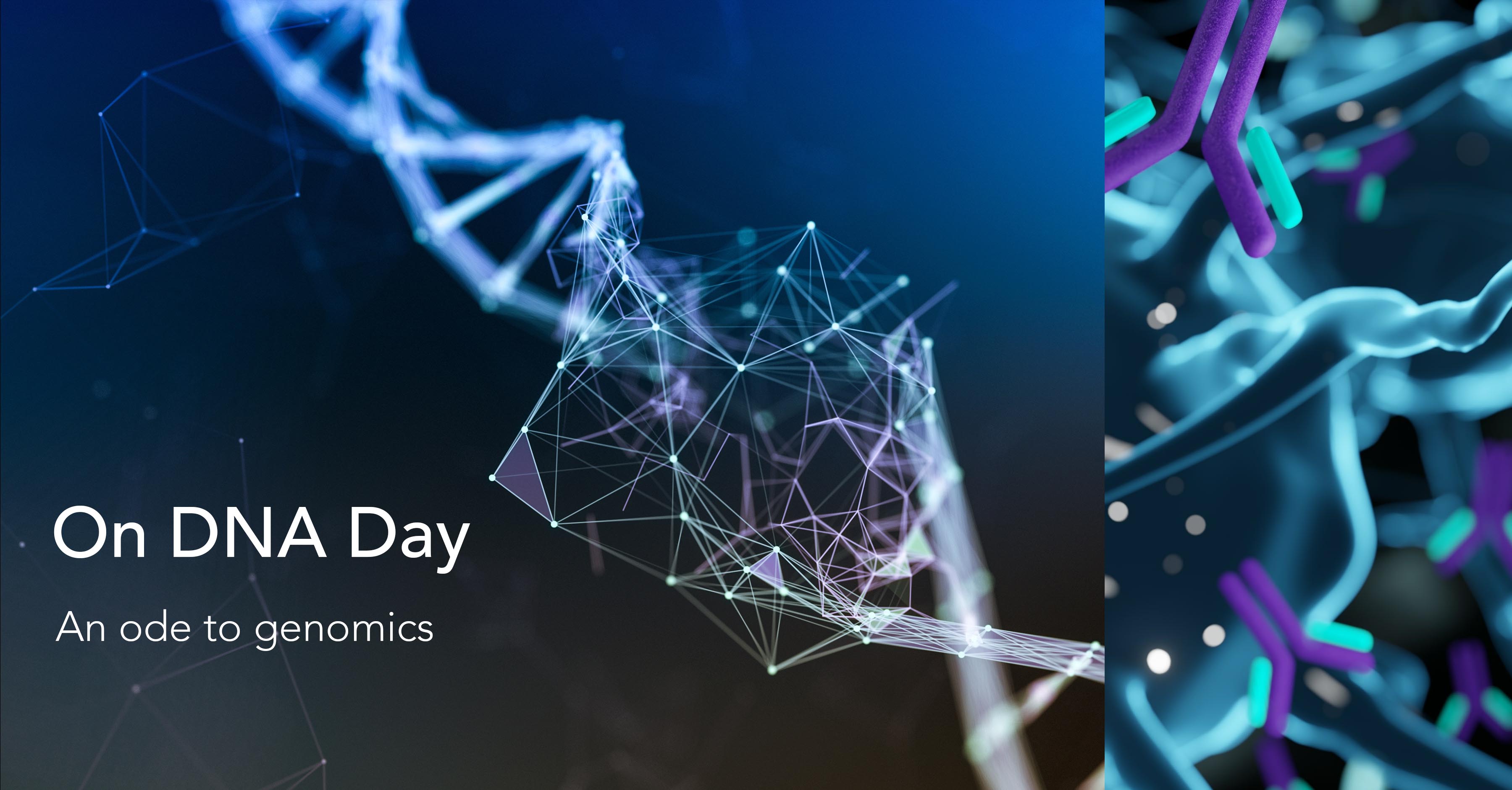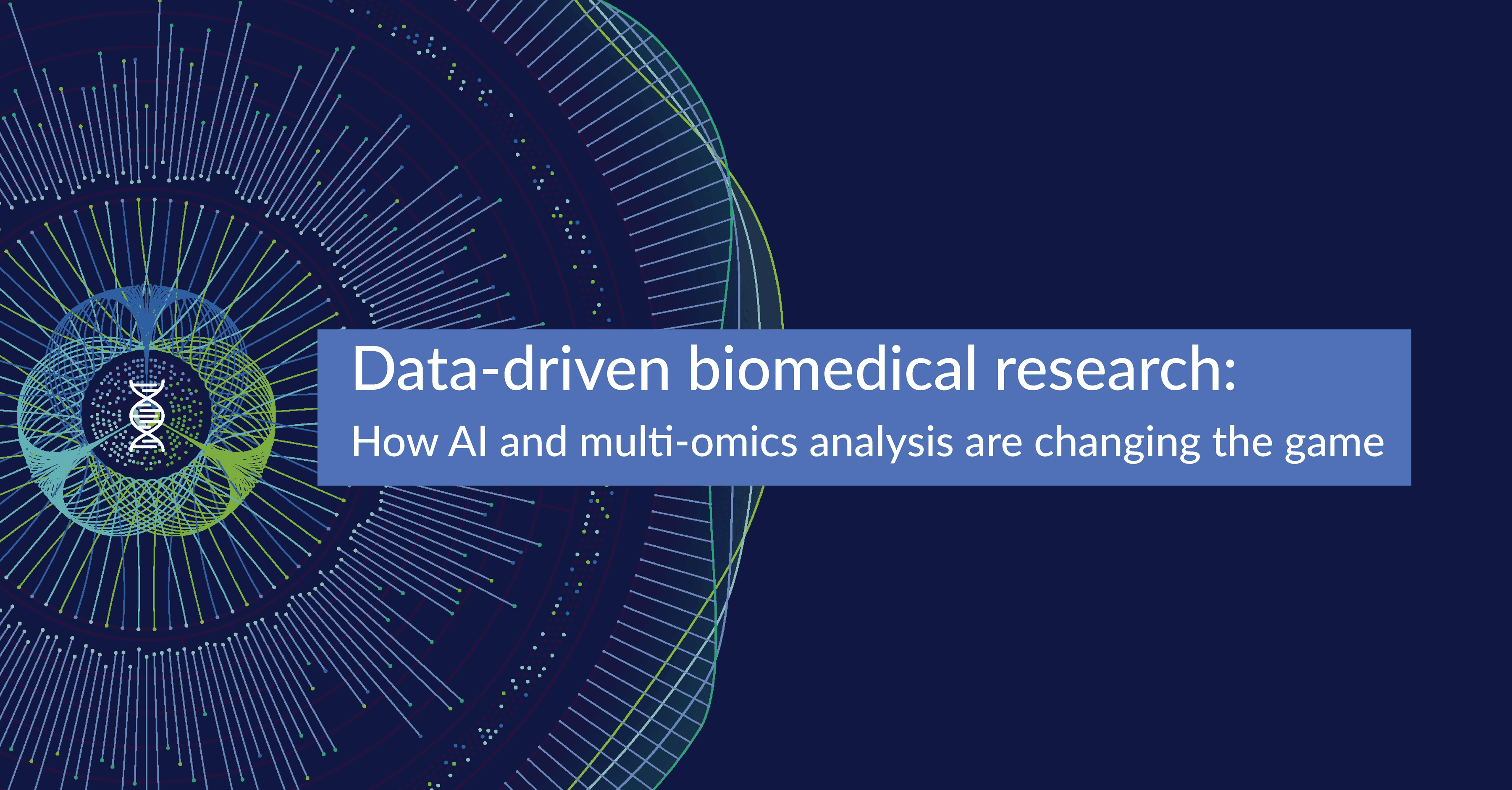How exact matching improves accuracy and efficiency in genomic sequence analysis and speeds up research

Genomic sequence analysis is a powerful tool that allows us to understand the DNA, the RNA, and peptide sequences structure, functions, and features. Whole-genome sequencing analysis is possible, and we can finally study it for diagnostic and clinical purposes; hence the importance of the validity of the data discovered.
Having a comprehensive and accurate genomic sequence analysis is paramount for Research & Development, and we need to make sure to have an accurate overview of the three different levels of data for microbes, viruses, plants, animals, and humans.
Accurate and easily accessible data means that everyone benefits from the results obtained.
Why statistical approximations aren’t enough
As of today, we have many tools for sequence comparisons and analysis, but most of them are outdated in terms of their accuracy and effectiveness, and scientists struggle to maintain genomic data analysis at the same pace of genetic data generation.
Genomic sequence analysis allows us to observe an entire set of genes from a specific organism. This approach guarantees the study of complex interactions between all genes, and as a result, we are able to study the mechanisms of some diseases, for example. But genomic sequence analysis is a lengthy task, requires a series of operations and the checking of large databases, and the time spent on this task could be implemented into other types of assignments that could speed up research and development. The whole sequence analysis process is time-consuming due to the fragmentation of the operations, which require performing several phases as they are divided into specific sections. The researcher must work in silos and wait to gather data with several different tools, each tool requiring extensive training due to their complexity.
Furthermore, current sequence analysis relies on statistical approximation methods which have an important downside, the propagation of errors. These methods also lack scalability, which is the capability of analysing massive amounts of data at high speed. The whole process is very much like a puzzle that must be assembled to obtain an overall meaningful figure. Solving the puzzle is made harder than necessary.
The possibility for exact matching in genome sequencing analysis will improve efficiency
In computer science, indexing and exact matching are very well-known principles for accurate knowledge extraction out of large data sets. Applying exact matching for sequence analysis and omics analysis in general would change genomic data extraction drastically. It makes sure that all the data available can be analysed at higher speed, as well as improving accuracy of the results. Detection of similarities and variations in DNA, RNA, and protein is easily accomplished and results are more accessible.
Creating more accurate data comparisons is crucial to make sure research proceeds in the right direction. Exact matching can allow us to tackle the contemporary issues that we are trying to address when it comes to the understanding of the diseases and the biological processes.
Exact matching not only allows for extremely fast and accurate comparison of sequences in one silo or dataset, it also helps to finally get rid of the cumbersome process of comparing and analysing multiple sets of sequences. The latter can be done without losing speed or accuracy, which is what happens today with the current technology. With the BioStrand exact matching approach we are able to compare and analyse results with a multitude of other silo’s and databases. The results are also easier to read as they are contained, rather than fragmented and divided between different tools.
BioStrand provides the next generation of omics analysis tools which are based on exact matching; it is an innovative yet intuitive procedure with powerful potentials: faster results, lower costs, and high accuracy. The implications for pharmaceutical and biomedical R&D are especially remarkable: We can expect great results from a tool able to find genetic similarities or contrasting differences in ways that can expedite drug formulations and the treatments of novel diseases, for example.
The scientific and healthcare community could benefit immensely from a more efficient and precise form of research. This form of innovation could speed up many processes related to biotechnology, pharmacology & drug development, agro-chemical, and the diagnosis of several diseases, avoiding unnecessary delays.
We recognize how important it is to give researchers the right tools to make scientific progress possible. BioStrand’s new more complete and accurate data analysis methods based on exact matching will improve the overall view on the data and allow the researcher to focus on finding new associations and discoveries. BioStrand can reduce the researcher’s burden of choice and allow the analysis of all the gathered data at once, unlocking a higher potential for more in-depth and true knowledge.
Picture source: AdobeStock © Sergey Nivens 128942041
Subscribe to our blog:






